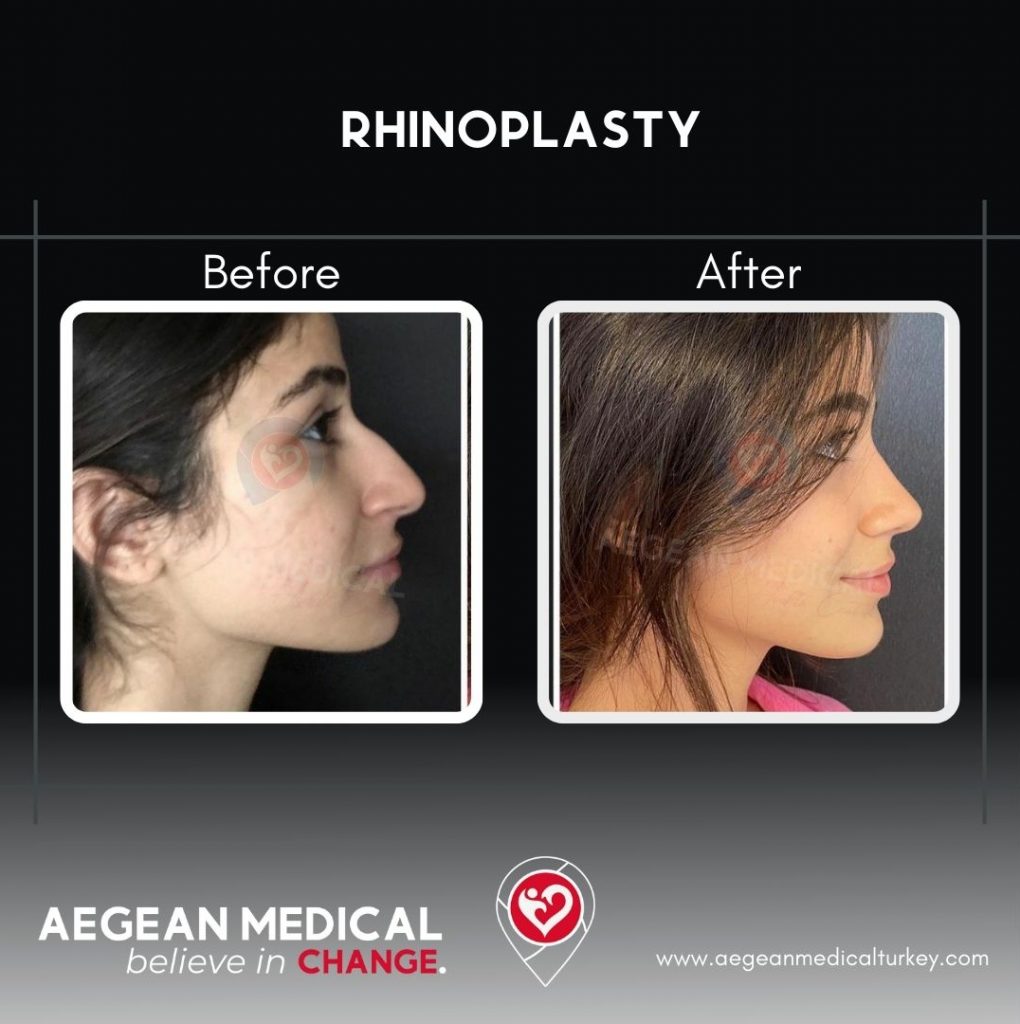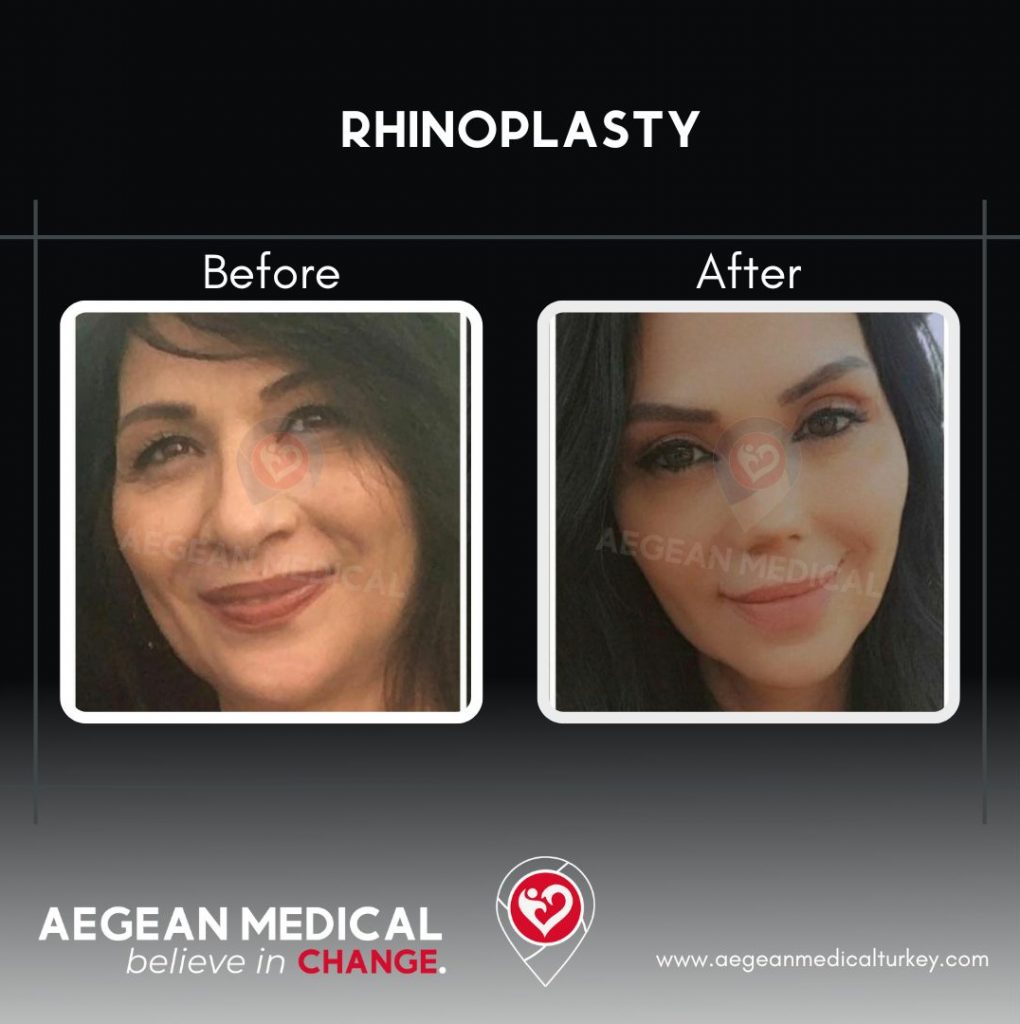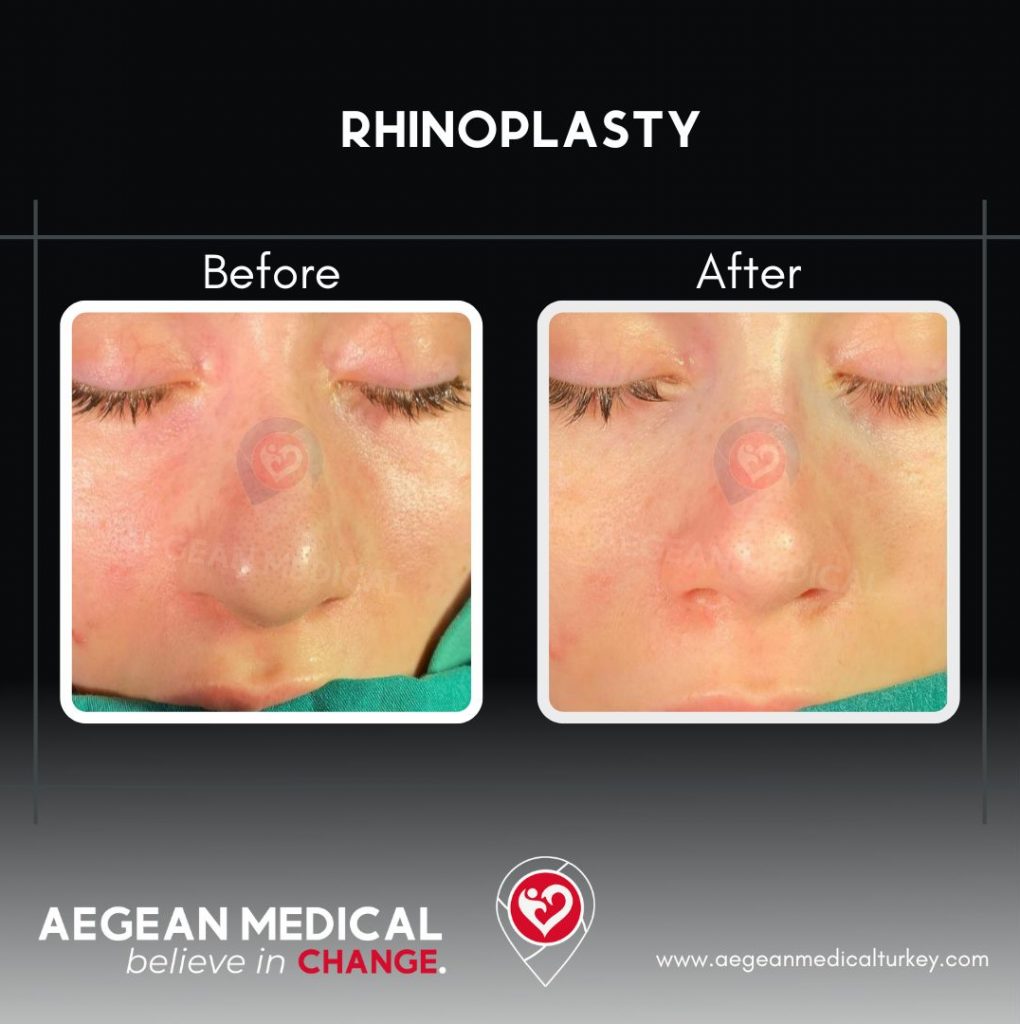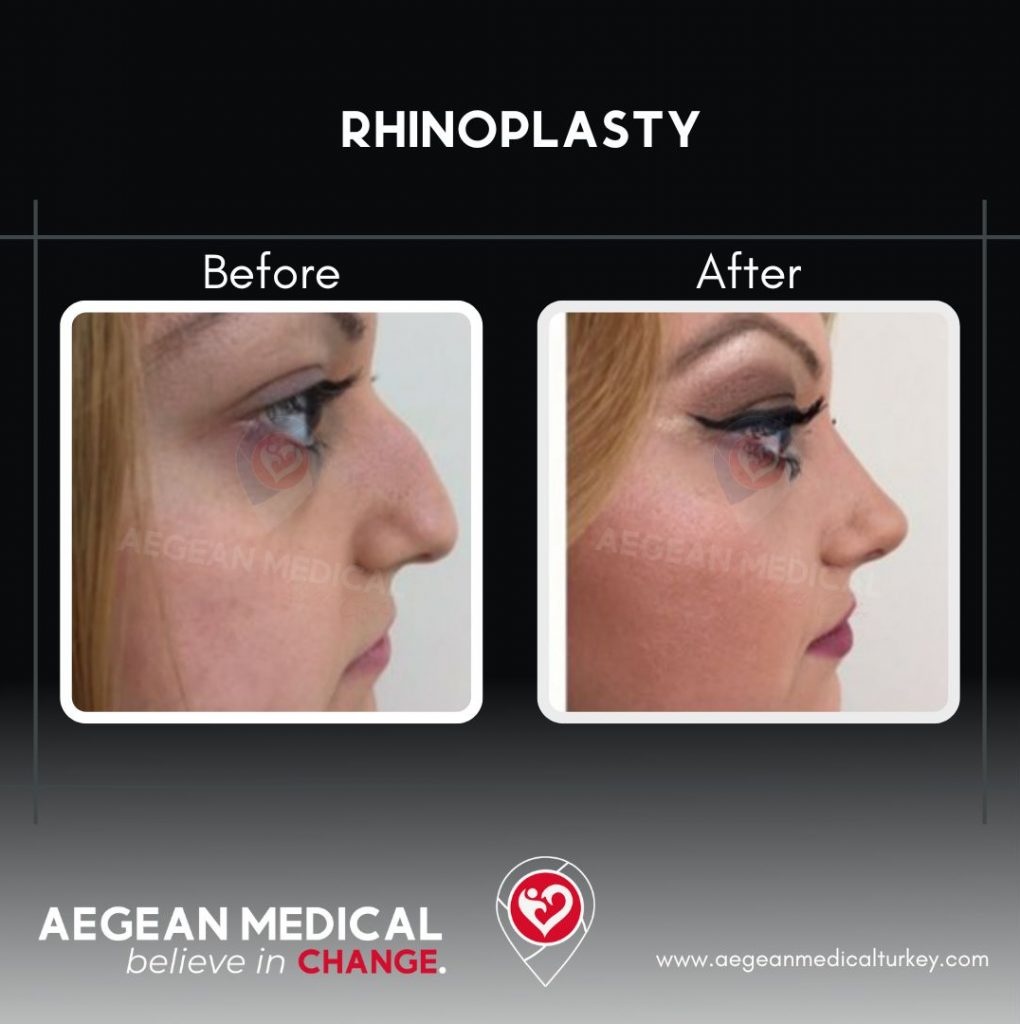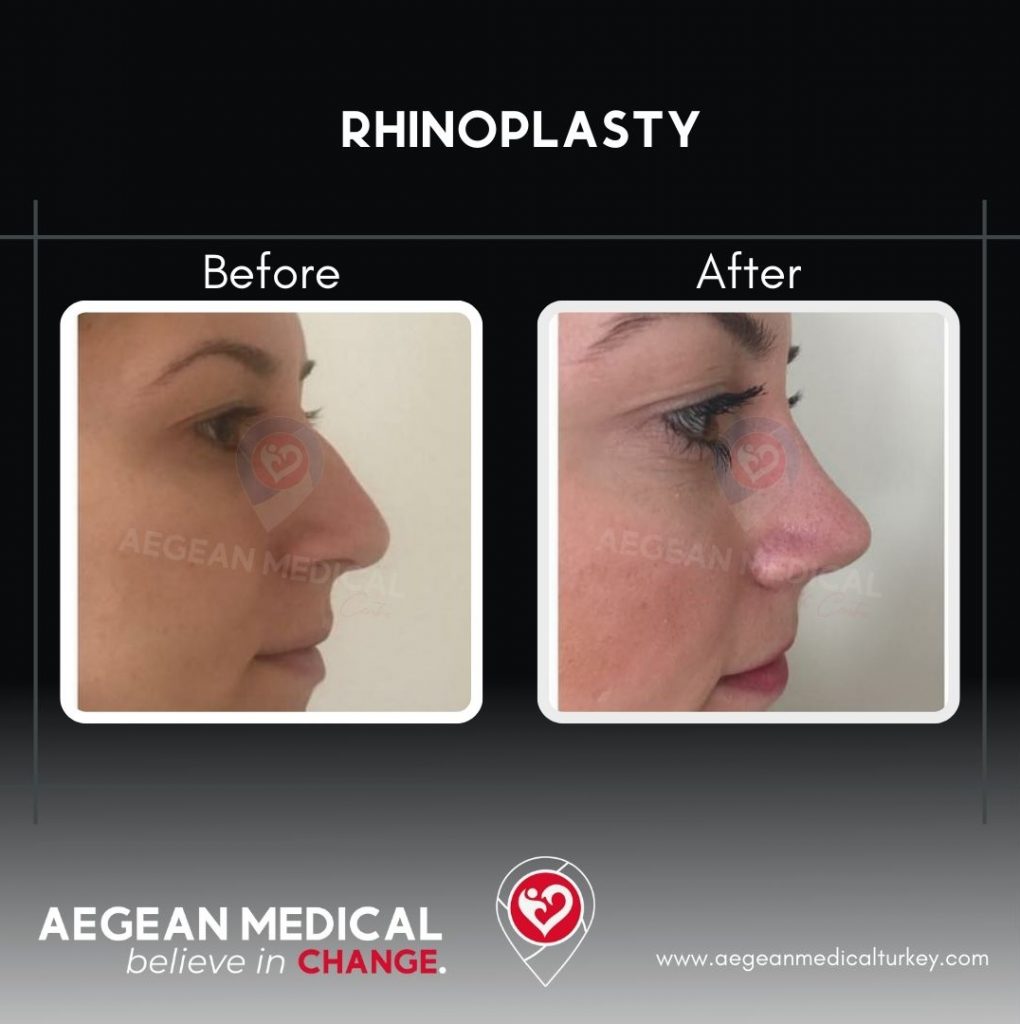Rhinoplasty
Rhinoplasty is a surgery that changes the shape of the nose. The motivation for rhinoplasty may be to change the appearance of the nose, improve breathing, or both.
The upper part of the nasal structure is made up of bone and the lower part is made up of cartilage. Rhinoplasty can change bone, cartilage, skin, or all three. Talk to your surgeon about whether rhinoplasty is right for you and what it can accomplish. When planning a rhinoplasty, your surgeon will consider your other facial features, the skin of your nose, and what you want to change.
Rhinoplasty may be covered in whole or in part by insurance.


Your medical history;
The most important questions doctors ask are motivations and goals for surgery. Your doctor will also ask about your medical history, including nasal congestion, surgeries, and medications you are taking. If you have a blood clotting disorder such as hemophilia, you may not be eligible for rhinoplasty.
Physical examination;
Your doctor will do a complete physical examination, including laboratory tests such as: Blood test. He or she will also examine your facial features and your nose inside and out. A physical examination helps doctors determine what changes need to be made and how to determine physical characteristics such as: Skin thickness and cartilage thickness at the edge of the nose may affect results. A physical examination is also important in determining the effects of rhinoplasty on breathing.


Photo;
A doctor at the clinic will take pictures of your nose from different angles. The surgeon can use her computer software to manipulate the pictures and show you what the results are. Physicians use these photographs for pre- and post-operative evaluation, intraoperative reference, and long-term review. Above all, photographs enable focused discussion of operational goals.
A conversation about your expectations;
You and your doctor should discuss your motivations and expectations. He or she will explain what rhinoplasty can and cannot do and what the results will be. It’s normal to feel a little apprehensive when discussing your appearance, but it’s very important to talk openly with your surgeon about your hopes and goals for surgery.
If your jaw is small, your surgeon can discuss jaw augmentation surgery. This is because a small chin creates the illusion of a larger nose. In these situations, chin surgery isn’t necessary, but it can help balance out the contours of your face.

After the surgery
After the surgery you need to rest in bed with your head raised higher than your chest, to reduce bleeding and swelling. Your nose may be congested because of swelling or from the splints placed inside your nose during surgery.
In most cases, the internal dressings remain in place for one to seven days after surgery. Your doctor also tapes a splint to your nose for protection and support. It’s usually in place for about one week.
Slight bleeding and drainage of mucus and old blood are common for a few days after the surgery or after removing the dressing. Your doctor may place a “drip pad” — a small piece of gauze held in place with tape — under your nose to absorb drainage. Change the gauze as directed by your doctor. Don’t place the drip pad tight against your nose.

To further lower the chances of bleeding and swelling, your doctor may ask that you follow precautions for several weeks after surgery.
Your doctor may ask you to:
- Avoid strenuous activities such as aerobics and jogging.
- Take baths instead of showers while you have bandages on your nose.
- Not blow your nose.
- Eat high-fiber foods, such as fruits and vegetables, to avoid constipation. Constipation can cause you to strain, putting pressure on the surgery site.
- Avoid extreme facial expressions, such as smiling or laughing.
- Brush your teeth gently to limit movement of your upper lip.
- Wear clothes that fasten in the front. Don’t pull clothing, such as shirts or sweaters, over your head.

In addition, don’t rest eyeglasses or sunglasses on your nose for at least four weeks after the surgery, to prevent pressure on your nose. You can use cheek rests, or tape the glasses to your forehead until your nose has healed.
Use SPF 30 sunscreen when you’re outside, especially on your nose. Too much sun may cause permanent irregular discoloration in your nose’s skin.
Some temporary swelling or black-and-blue discoloration of your eyelids can occur for two to three weeks after nasal surgery. Swelling of the nose takes longer to resolve. Limiting your dietary sodium will help the swelling go away faster. Don’t put anything such as ice or cold packs on your nose after surgery.
Your nose changes throughout your life whether you have surgery or not. For this reason, it’s difficult to say when you have obtained your “final result.” However, most of the swelling is gone within a year.
Clients Feedback
I met with this clinic to have a rhinoplasty operation. I had met with a few other specialists before the clinic, this place gave me the most confidence. After the operation, I survived the process very comfortably with the intense interest of the doctor and his team. I would like to thank them all again and recommend Aegean medical Turkey to you.
Sharon Geiger
Our story with this clinic started with my daughter’s nose surgery. We were very satisfied with the surgery. He has been my family’s and my regular doctor for about 2 years. I myself had rhinoplasty 10 days ago. I had a very comfortable and painless process after the surgery. I thank him very much.

